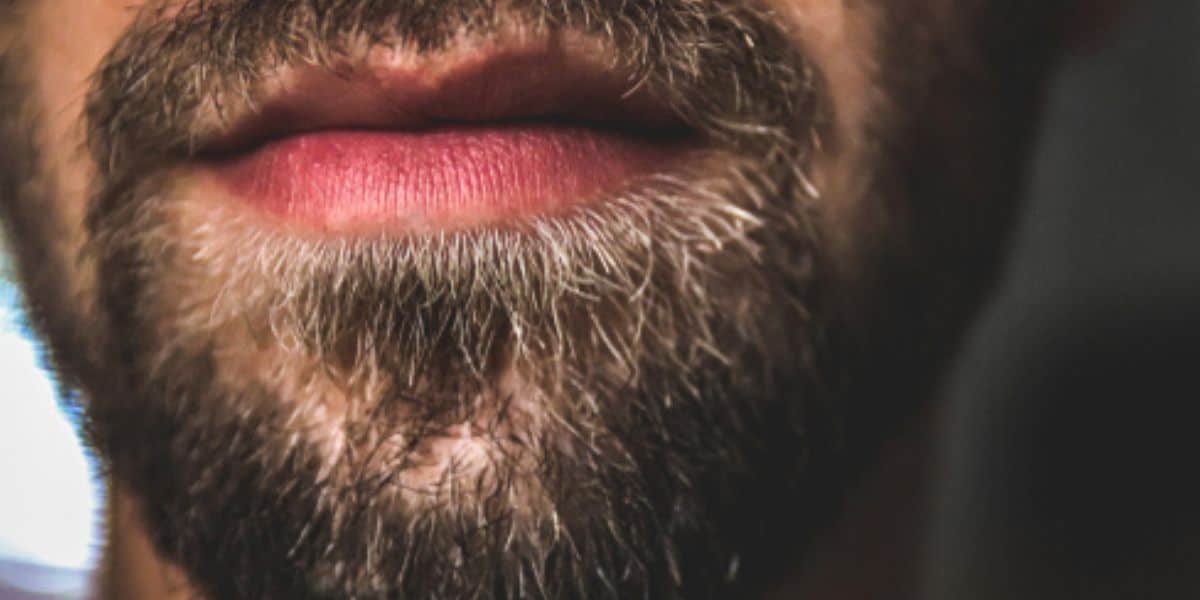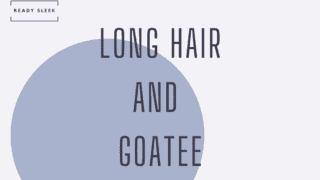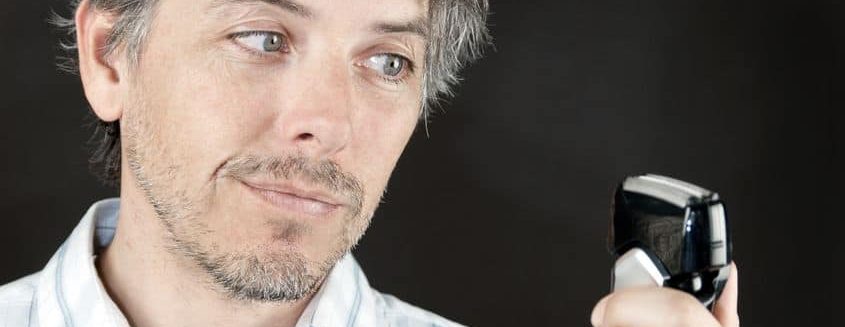The patchy goatee is a sorrow that plagues men globally. What differentiates them is how they deal with this seemingly never-ending problem. It’s interesting how some men with a patchy goatee are able to pull it off with effortless style, while others fail and often resort to shaving.
Often, what sets them apart is the mindset, style choice, and rigorous grooming habits. There are so many goatee styles to choose from that you’re almost guaranteed to find one that works despite your patchiness.
Although I make it sound easy, believe me – it’s not. The “miracle cures” you see peppered across social media claiming to enhance and thicken growth are usually pure nonsense.
The best solution is not to try and beat the patchiness, but to work with it. Don’t think of patchiness as the enemy. Think of it merely as a minor obstacle.
In some ways, patchiness forces us to experiment and come up with more unique styles to work around it.
OK. Mindset training over. Let’s get to the meat of this topic. I want to go through some styles that could work well despite the patchiness of the goatee. Then, I’ll talk through some of those grooming habits you could adopt to try and counteract the patchiness.
6 Excellent Patchy Goatee Styles
“Help, my goatee is patchy!”
You may find yourself crying this out into thin air. It can be endlessly frustrating to feel as though you aren’t making any progress while it seems as though the world around you is growing Viking-esque facial fur.
The key to success is adaptation. Work with what you’ve got, instead of chasing after what you don’t.
It’s highly unlikely that all of these styles will work for your specific patchy goatee.
Bear this in mind. Consider the following styles, but also consider how else you could adapt and trim your specific patchy goatee beard in a way that works for you.
1. The Disconnected Goatee
It would be difficult to predict exactly which part of your goatee is patchy. But a common scenario is for the area in between the chin beard and mustache to be very thin.
This often leads to frustration over the goatee “not connecting”. Unfortunately, this can be something that continues to be a problem even after growing the goatee out longer.
A simple solution would be to style the goatee in such a way that the goatee doesn’t even need to connect. The connecting portion is simply removed and disregarded. This is what leads to a disconnected goatee.
This is often my advice to men with patchy beards. It’s almost always the case that not all of the beard is patchy. There are specific parts of the beard that are patchy and styles that completely disregard these areas should be strongly considered.
Remove the patchy areas in a way that makes stylistic sense.
Disconnected goatees are in themselves a large bucket of possible styles. If you’ve had a Full Goatee in a while, simply shaving the patchy, thin hair in between the chin beard and mustache will lead to a simple, straightforward disconnected appearance.
But if you wanted to go a step further, you could try the Van Dyke.
2. The Van Dyke
The Van Dyke is a variant of the disconnected goatee, but it’s a little interesting and complex.
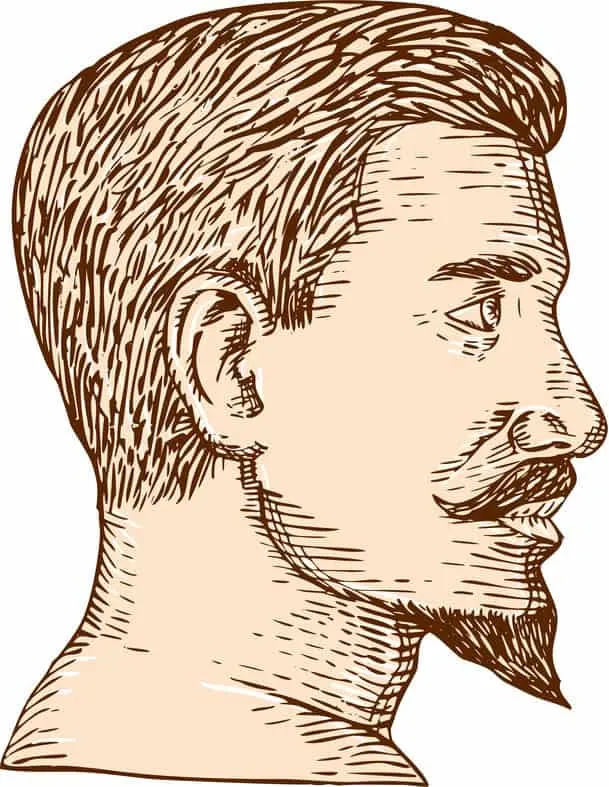
There are two main differentiating features of the Van Dyke:
- The mustache is usually styled into a handlebar.
- The chin beard may or may not be styled into a point. A downward-facing triangle is a common shape you might see here.
Both of these features may not be present, but you can rest assured that the style will be disconnected. That’s what makes it great for men with patchy goatees.
It’s pretty straightforward once you get the hang of it. Trimming does take a bit longer because you’ll want to be more meticulous with the mustache. You’ll also need some additional styling products to keep the handlebar in place.
3. The Traditional Goatee
You’ve probably realized how the styles listed take into account which area might be patchy and try to work around it.
The traditional goatee consists of hair on the chin but nowhere else. None on the cheeks, and no mustache. Going back in history, this was originally considered the only definition of a goatee.

But since the 1990s goatees have often included mustaches as well. In fact, this has almost become the norm.
So, men with patchiness outside of the chin area would do well to consider this style. You completely remove concerns over a patchy mustache area or connecting area.
It’s extremely easy-to-maintain, with only a small area of the face to worry about. Trimming and maintaining a chin beard isn’t difficult.
4. The Anchor Goatee
This may or may not just be a chin beard. It very often incorporates a mustache as well. But the chin area is the focus – the piece de resistance.
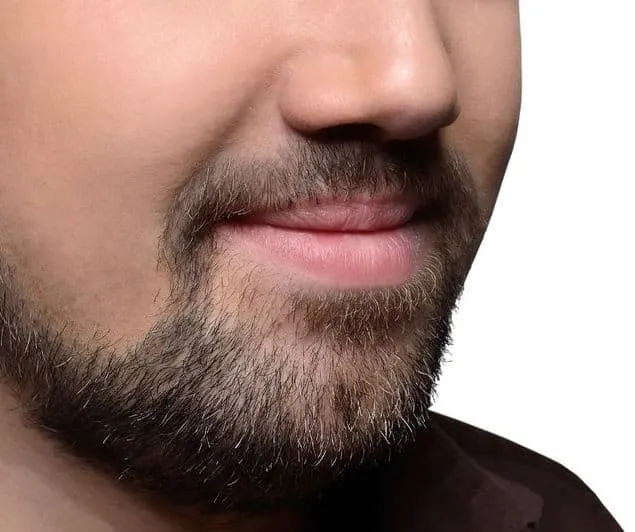
I love how the name does really explain what it is. The chin beard is sculpted into the glorious shape of an anchor.
The way this is done is by allowing the soul patch (the tiny patch immediately below the lower lip) to seamlessly blend into the chin beard. The chin beard tails backward along part of the jawline.
The result is an impressive, attention-grabbing shape that strongly resembles an anchor. It’s pretty neat.
There isn’t a whole lot more to say about the style. If you’re looking for a way to spice things up and turn some heads, this may be for you.
It works for men with patchy goatees in the same ways the ones earlier do. If you’ve got a patchy mustache or connecting area – account for this. It works well as a disconnected goatee style, as well as simply just a chin beard.
The versatility here is one of its key benefits.
5. The Long Goatee
“Length is strength”. Have you heard that saying in the facial hair grooming space before? Probably not, because I just made it up. But hear me out.
Another tried-and-tested solution for beating patchiness is growing it out. It’s so common for men who experience patchiness to trim and shave everything off prematurely out of sheer frustration.
Because of this, they don’t ever allow their goatee to reach its full potential. They’ll never know whether all it’ll take is just a few millimeters more to fill out those insufferable patches.
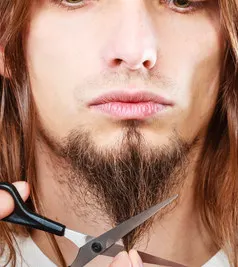
It could happen. I won’t delve deep into the power of growing out facial hair here, as I’ll be doing that a bit later on.
Just know that growing the goatee out a little longer than you might initially be comfortable with is a good idea. It’s worth trying at a certain point.
It may not only fill out some potential patches, although this is definitely the priority. It’ll also allow you to experience a longer goatee and all of its glories. A long goatee flowing downward is incredibly versatile.
There’s just so much more you can do with it when you’ve got a bit of length. I mean, you could even braid it.
Having a long goatee does, however, come with increased maintenance requirements. Brushing, combing, and oiling should become a very regular habit.
6. The Goatee With Sideburns
Another tool you could use to tackle a patchy goatee is the power of distraction. It’s easy to focus on the patchiness of a goatee when the goatee in itself is the focus of your face.
If there’s nothing else to draw the attention, there’s a high likelihood that the goatee and the patchiness it displays will draw most of it.

A great way to distract the eyes of others is to grow some sideburns. Sure, most people have sideburns. But I’m talking about making them prominent. Prominent enough to be considered part of your style.
Not only do they draw some attention away from a patchy goatee beard, but they also nicely frame the goatee. Having the goatee in the center between two sideburns can look impressive and very effective.
Essential Tips For Men With Patchy Goatees
I’ve touched upon a couple of these already, but it’s time to talk about them in a bit more detail. Not only will this improve your overall understanding, but it’ll also make you more likely to incorporate them into your routine.
1. Adjust the length
Sure, length is strength. But not always – let me explain.
It’s true that the simple concept of letting it grow can fill out the patches of a goatee quite nicely. There’s a well-established “awkward phase” in every man’s bearded journey and sticking it out can sometimes seem impossible.
But more often than not, the rewards on the other side of that awkward phase are well worth the suffering. In other words, stick it out, grow it longer, and you’ll probably be pleased with the results.
Not only do the patches themselves have time to “catch up” with the furrier parts of the face, but camouflage also becomes an option. Longer goatee hairs are able to “cover-up” the thinner and patchier parts by combing over them.
Longer is often the solution.
But there’s another side to this coin. Sometimes, trimming it shorter can also prove to be fruitful. This may sound completely contradictory, but once again, hear me out.
Heavy stubble, for instance, can look quite patchy in some men. Trimming the goatee down to short or medium stubble can sometimes make these patches less obvious. This is potentially because the hair is more even overall.
A general rule that works quite well is that if you’ve just got one or two patchy spots within the goatee, it’s probably worth growing it out. This should give them time to “catch up”, but will also give you the option of “covering up”.
But if your goatee is generally patchy all over, then trimming it shorter may be a better option. The shorter length may make the generalized patchiness less noticeable overall.
2. Trim it regularly and evenly
This follows on quite nicely from the last comment. Patchiness is often the result of hairs within the goatee being of different lengths. If you put shorter hairs next to longer hairs, the shorter hairs will look relatively patchy compared to the longer ones.
But in actuality, this is just an illusion of patchiness as opposed to the absence of hair.
This difference in length between hairs of a goatee is entirely normal and natural. It’s just more obvious in some men more than others.
So, to counteract this problem, see if the problem improves with trimming it down to a neat, even length. This simple solution may lead to a less patchy appearance overall.
Even if it only makes a small difference, tackling patchiness is all about making incremental gains by using different tactics.
Try it out.
3. Wash regularly
Goatee hygiene is crucial. The hair is predominantly around the mouth, an area very susceptible to collecting little bits of food and debris. It’s also quite an oily part of the face, so the accumulation of sebum can cause significant greasiness.
Greasiness, oiliness, and debris can cause a goatee to look patchy, even when you’ve got plenty of hair to work with.
This makes sense because oily substances tend to clump together. If you oil up a beard, the hair strands stick together, revealing patches and causing the beard to look thinner than it actually is.
How you choose to wash a beard is up to you. As a minimum, rinsing the beard daily with water only is essential. In addition to this, you may choose to start using a shampoo.
Never use hair shampoo on your beard as a general rule. It’s just too strong and will do more damage in the long run. Using a beard shampoo is a gentle alternative that may be worth doing, particularly if your goatee is particularly vulnerable to becoming oily.
However, try not to use beard shampoo more than twice a week. Overusing shampoo can cause the beard and the underlying skin to dry out, causing unnecessary itching and flaking. Plus, it just looks unhealthy.
So, wash it regularly to make even more incremental gains in tackling goatee patchiness.
4. Brush it regularly
Bear in mind this is only necessary if the beard is long enough. Starting to brush early is always good practice, but trying to brush short stubble probably wouldn’t be the best use of your time.
Although every man’s rate of growth varies, starting to brush after around 3-4 weeks of growth is probably worth doing.
It neatens, straightens, and flattens the goatee. This makes it look fuller and thicker overall. It untangles any tangles that may be worsening the patchiness and also trains the beard hairs to grow in the desired direction.
This can have profound effects in the long run, one of which being improvement in patchiness.
Combing is only necessary for longer beards – around 2 to 3 months of growth is usually a good benchmark. This is because the teeth of a comb are able to get within the depths of the beard and tackle those deeper tangles.
5. Try dyeing it
This might seem like a cheat, and in some ways it is. But beard dyeing isn’t unusual, nor is it discouraged. It’s a great way to quickly add texture, fullness, and color to a goatee.
Another common reason for a goatee to look patchy is variation in color. When darker hair grows immediately next to lighter hair, the lighter hair will look thinner. This can lead a patchier-looking goatee overall.
Facial hair that grows in different colors is usually a normal phenomenon. In fact, it’s very common. A simple way to make the goatee look thicker and fuller would be to make the color more even overall.
This is where beard dye comes in.
I’ve written a whole article on how to dye a goatee if you were interested. Ultimately, you’ve got many, many different ways of doing it.
Dyeing a beard naturally is an option but isn’t a surefire way of getting good results. Some people, however, are so against artificial dyes that natural dyes may be the most appropriate option. Dye staining the skin is also a common problem, but there are definitely ways of minimizing it.
Without going into too much detail, mascara is also a hot favorite of bearded men looking for a touch-up. Brushing it across a goatee could be a quick and easy way to darken things up.
Conclusion
You’ve probably realized by now that a patchy goatee isn’t the end of the world. There are things that can be done.
However, the most effective solutions are usually the ones where you work with or around the patchiness, as opposed to trying to encourage growth.
Have faith that you will find a solution that works for you. Consider this a guide to help you find it.
Experiment and have fun with it.
Ready Sleek founder. Obsessed with casual style and the minimalist approach to building a highly functional wardrobe. Also a fan of classic, vintage hairstyles.

